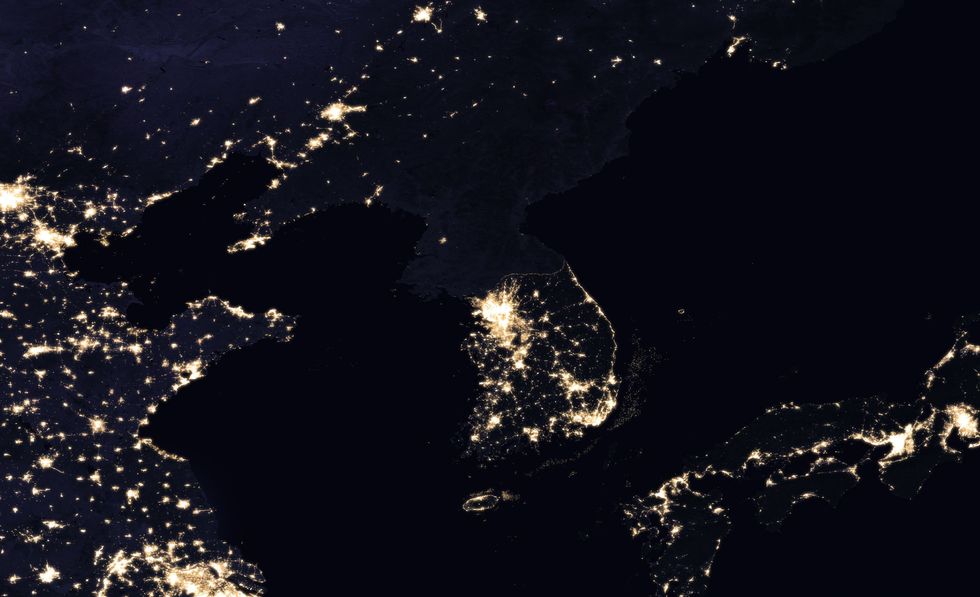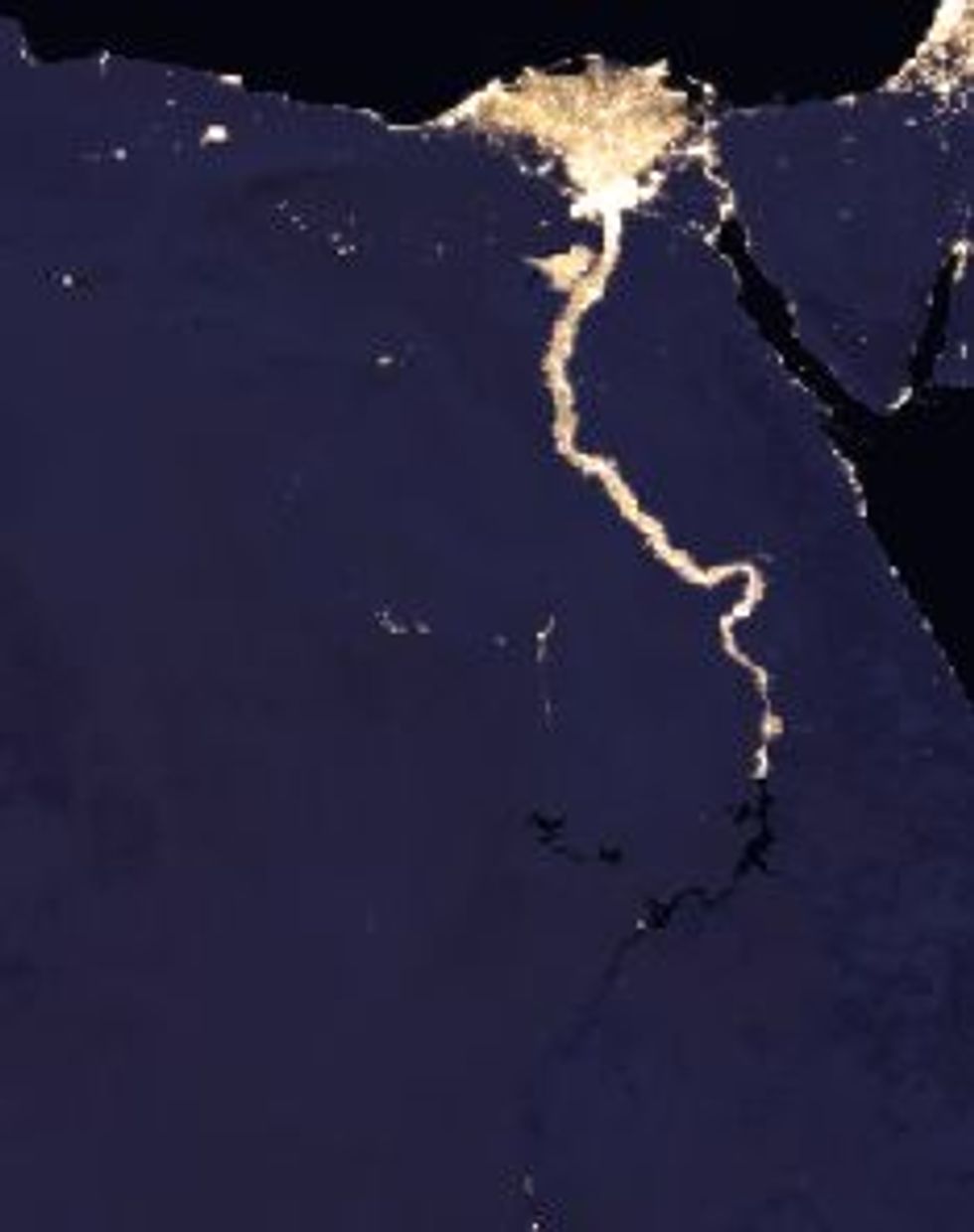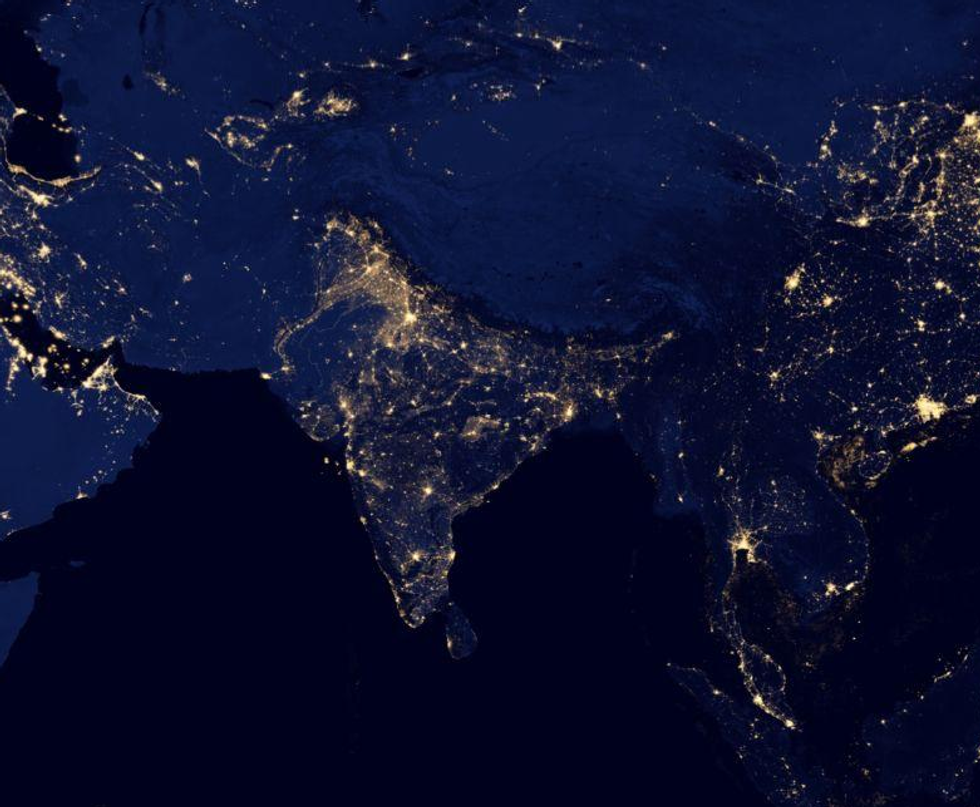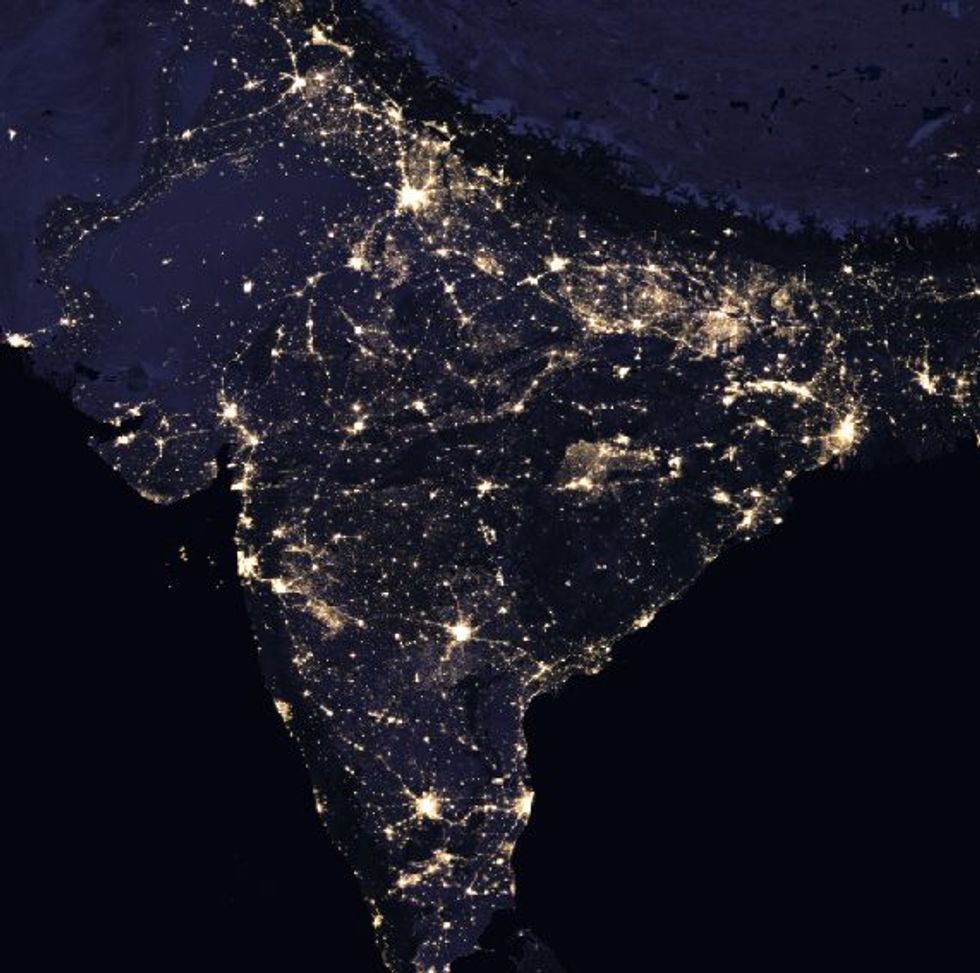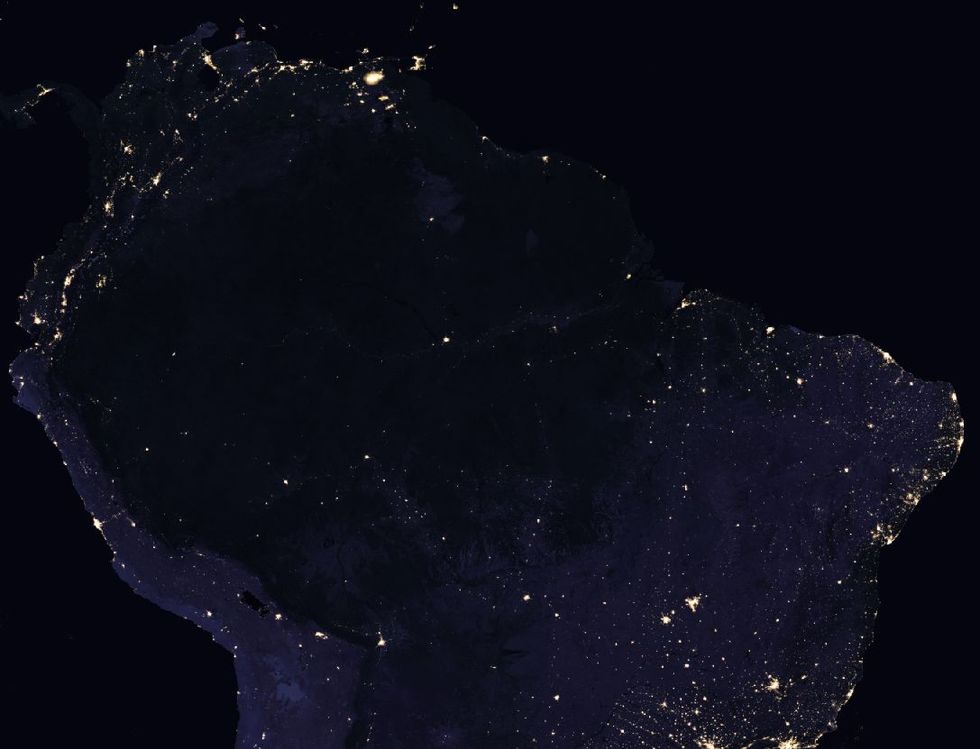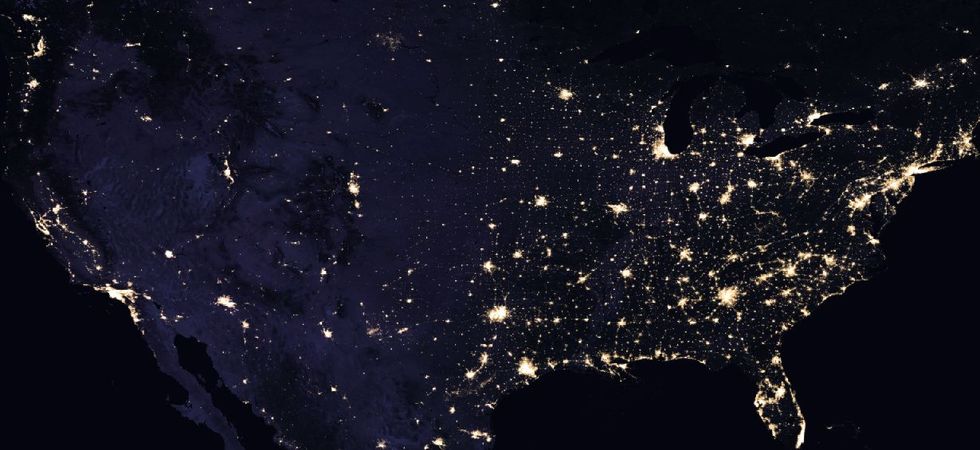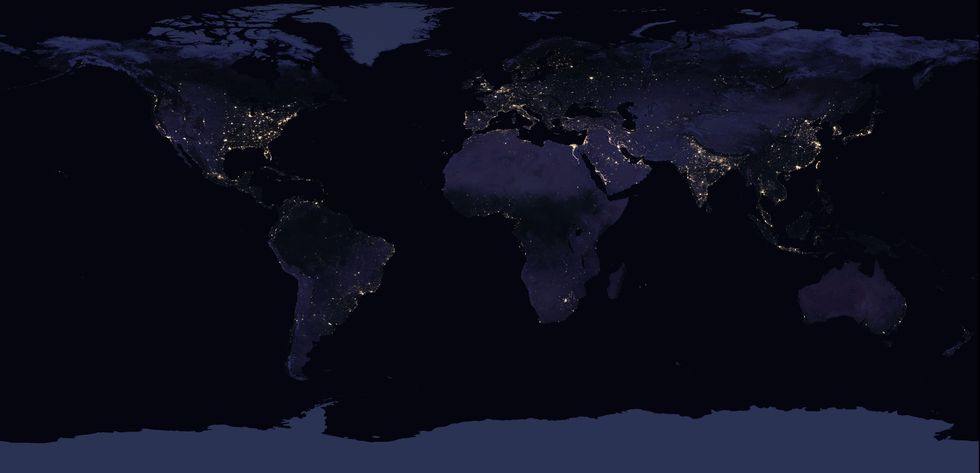On April 13th, NASA released a new image of the Earth at nighttime dubbed "Black Marble," a reference to the description of Earth as the Blue Marble. "Black Marble" is a composite picture of a multitude of satellite photos that spanned the globe. While human civilization is not easily detectable from space during the Earth day, it becomes starkly apparent at nighttime with cities and power grids stretching across continents like a spider web. Several noteworthy items can be gleaned from the picture.
1. North Korea is backward compared to its neighbors
With the exception of a sole light that marks the location of its capital, Pyongyang, the communist nation is completely blacked out and almost bleeds into the surrounding seas. Its neighbors, South Korea and China, are clearly far more industrialized and affluent than the militant-isolated country.
2. Egyptian society exists as a sliver along the Nile
The Nile is almost perfectly highlighted amongst the darkness of the surrounding desert. Although Egypt foes do not have the greatest population density due to its relatively large geographic size, this image explicitly shows how concentrated its population is along its lifeblood river and how volatile its surroundings are.
3. India is rapidly developing
"Black Marble" is a follow-up to a similar project done in 2012 and the differences in India between the two show just how fast certain regions are developing. India is expected to be an economic powerhouse in the future and this is a prime showcase of how its infrastructure is improving.
4. How important geography is to human civilization
"Black Marble," in its electric purity, reveals that the world population is not spread evenly. Rather, it is concentrated along certain waterways and regions while devoid in large swathes of land. The images above show how empty Siberia, the Amazon, and the Rockies are compared to other areas. As the world population increases and climate change threatens coastal areas, sheer geography is going to play an even greater role in how humanity will have to adapt to its environment. Either it will have to develop means of making these regions habitable, such as deforesting the Amazon, in order to accommodate more people, or certain areas and cities will become especially concentrated and overcrowded.
5. There is a great divide between the developed world and the undeveloped world
The eastern United States, Western Europe, southern China, and eastern India are lit but most of Africa, Central Asia, and South America remain in the dark. Certain countries in these regions like Brazil, Nigeria, and South Africa are rapidly developing but they are clearly not as well established as first world nations. As time passes, the "Black Marble" should change as more countries are able to better establish themselves, but until then a great disparity exists between the amount of development of different regions.


